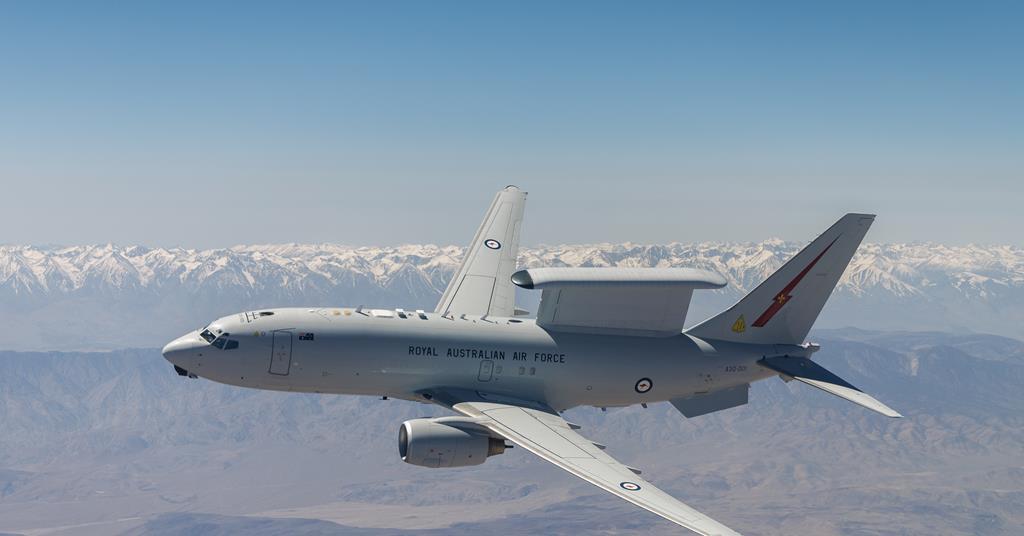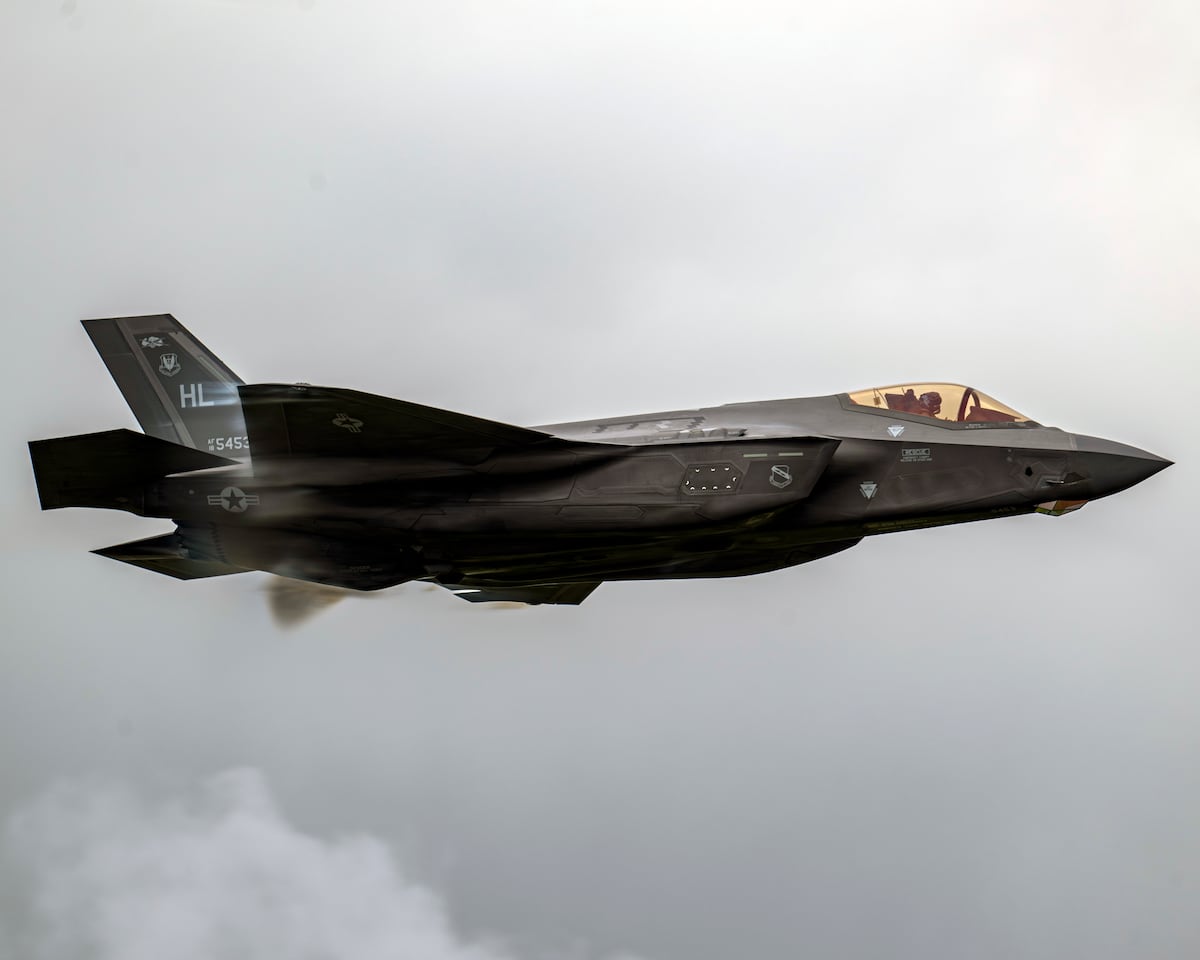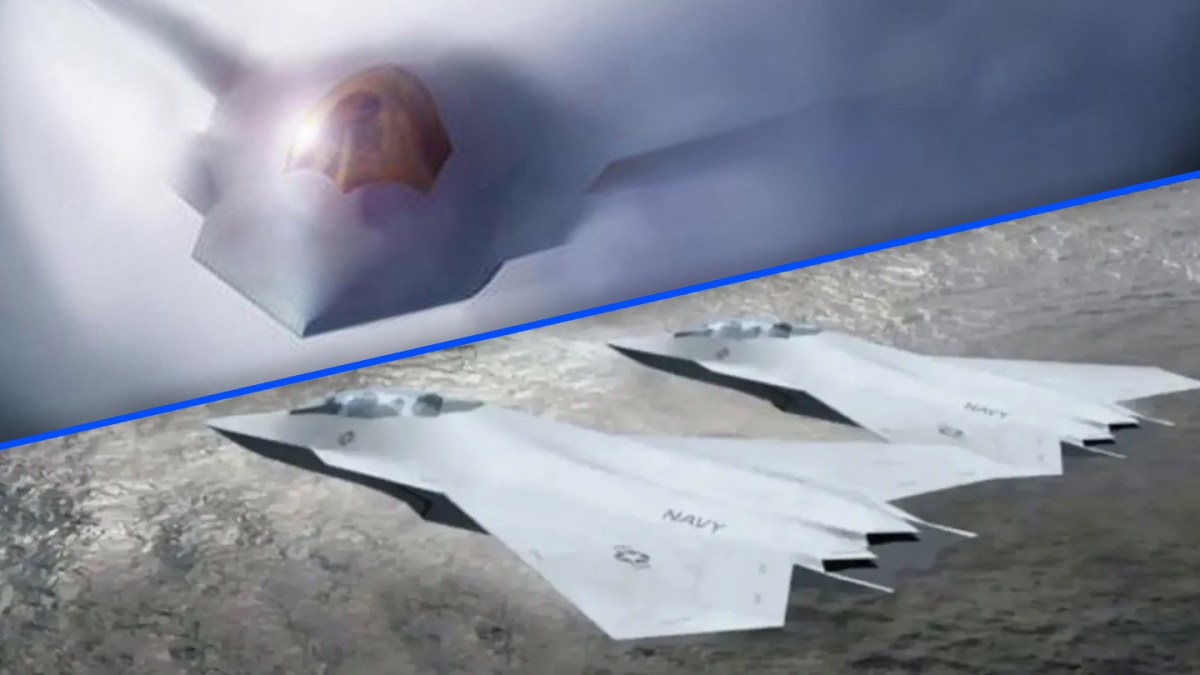Are you sure about that? I've seen the figure of 88 E-2D built, mostly for the USN, & any that haven't been lost should still be in service. The E-2D is in production for France, Japan & I think still the USN.E2s limited max altitude will cut down over the horizon scan range. Making matters worse there are only 16 in the USN. Those 16 are supposed to be cycled with the active CVNs so increasing demand on fixed supply. Justified by hopes and Promises that the Spaceforce option will mature….
USAF News and Discussion
- Thread starter RobWilliams
- Start date
StevoJH
The Bunker Group
At least most of these satellites are in LEO, hopefully the debris would have all deorbited within 5-10 years depending on altitude.Given the recent IOTUS-Musk feud, it is surprising the E7 is being $hitcanned for a space based alternative using SpaceX rockets. Furthermore, this will take longer to deploy. Yes, aircraft vulnerability could be an issue but the E2 is perhaps more vulnerable than an E7 albeit more E2s can be acquired. Personally I believe the first consequence of a peer-to-peer conflict will the destruction of satellites by both nuclear EMP and kinetic hits thus ruining the future use of space near earth due to massive amounts of debris.
But yeah, relying on space based sensors in a high intensity peer on peer conflict is asking for trouble.
There is a reason why advanced inertial systems are still under heavy development, along with deployable ground based systems such as eLORAN.
Musashi_kenshin
Well-Known Member
Ordinarily I'd say that not proceeding with the E-7 is a terrible idea. But given the advancement of Russian/Chinese missile range such that aircraft like the E-7 will be increasingly vulnerable to be sniped, investing in cheaper platforms like the E2-D as a stopgap measure until space-based assets are available might be the smart move. A single E-7 is roughly $1 billion, whereas a E-2D is at most $300 million.
What would the USAF rather have to deal with a particular emergency, a single Wedgetail or three Advanced Hawkeyes?
What would the USAF rather have to deal with a particular emergency, a single Wedgetail or three Advanced Hawkeyes?
But E-2D is both less capable, & more vulnerable. Has to be quite a lot closer to what it's watching.
Current production E-7s cost about $700 mn, I think. The USAF's contracted to pay about $2.6 billion for two prototypes, including considerable changes to the design, so production cost should be significantly cheaper. They could get the current production standard quicker & cheaper.
Current production E-7s cost about $700 mn, I think. The USAF's contracted to pay about $2.6 billion for two prototypes, including considerable changes to the design, so production cost should be significantly cheaper. They could get the current production standard quicker & cheaper.
Todjaeger
Potstirrer
Another consideration is how long will it actually be, before a practical workable space-based AEW asset is in service? Keeping in mind that such a system would not only need to function properly under good conditions in peacetime, but also in bad conditions and/or times of conflict.Ordinarily I'd say that not proceeding with the E-7 is a terrible idea. But given the advancement of Russian/Chinese missile range such that aircraft like the E-7 will be increasingly vulnerable to be sniped, investing in cheaper platforms like the E2-D as a stopgap measure until space-based assets are available might be the smart move. A single E-7 is roughly $1 billion, whereas a E-2D is at most $300 million.
What would the USAF rather have to deal with a particular emergency, a single Wedgetail or three Advanced Hawkeyes?
As already mentioned, such satellites would be vulnerable to ASAT systems, as well as systems which disrupt, damage or destroy their sensors and/or comms/datalink systems. There is also a question on just how many satellites would be needed to provide the sort of desired coverage for a given area of airspace.
This has been mentioned by assorted experts, & current USAF officers. The consensus seems to be that space-based systems have considerable potential, but also risks, & on the most optimistic assumptions won't be able to replace aircraft in the timescale Hegseth seems to think.Another consideration is how long will it actually be, before a practical workable space-based AEW asset is in service? Keeping in mind that such a system would not only need to function properly under good conditions in peacetime, but also in bad conditions and/or times of conflict.
As already mentioned, such satellites would be vulnerable to ASAT systems, as well as systems which disrupt, damage or destroy their sensors and/or comms/datalink systems. There is also a question on just how many satellites would be needed to provide the sort of desired coverage for a given area of airspace.
Terran
Well-Known Member
Indications are they wouldn’t be USAF but USN. Similar to how the USAF borrowed EA-6 units for SEAD roles. They would be Navy aircraft and navy crews attached to USAF bases with the procurement going to NAVAIR for additional aircraft. In essence the USAF would off load the entire AWACS mission to first the navy and then eventually the Spaceforce.What would the USAF rather have to deal with a particular emergency, a single Wedgetail or three Advanced Hawkeyes?
https://deepnewz.com/us-domestic-po...es-e-2d-halves-f-35-orders-amid-cost-8f14dbee
What the!
If this is true, E-7 cancelled and replaced with E-2, with 26 planed airframes cut to only 5, of an older, much less capable design, this has to be one of the stupidest decisions in USAF history.
No surprises, Hesgeth was apparently behind this.
What the!
If this is true, E-7 cancelled and replaced with E-2, with 26 planed airframes cut to only 5, of an older, much less capable design, this has to be one of the stupidest decisions in USAF history.
No surprises, Hesgeth was apparently behind this.
Musashi_kenshin
Well-Known Member
Pretty sure this was all discussed previously.
- Wedgetail is much more expensive than the E-2D. It's up for debate if it's better to have more slightly less capable planes than a few, highly capable planes, especially as enemy AA missiles have increasingly long ranges.
- The budget proposes fewer F-35 deliveries in the budget year. It doesn't mean they're cutting the total numbers that will be ordered.
- Congress may reverse any/all of those changes by allocating more money to the budget.
I read through the other comments but posted the link anyway.Pretty sure this was all discussed previously.
- Wedgetail is much more expensive than the E-2D. It's up for debate if it's better to have more slightly less capable planes than a few, highly capable planes, especially as enemy AA missiles have increasingly long ranges.
- The budget proposes fewer F-35 deliveries in the budget year. It doesn't mean they're cutting the total numbers that will be ordered.
- Congress may reverse any/all of those changes by allocating more money to the budget.
They are not talking about replacing an expensive platform with a greater number of cheaper but still capable platforms, they are taking about cutting individual capability and numbers.
Yet another example of capability cuts when pressure is being placed on others to spend more.

Boeing defence chief optimistic about prospects for US E-7 acquisition
Despite indications the Pentagon has soured on purchasing new E-7A airborne early warning and control jets from Boeing, the head of the airframer's defence unit remains sanguine on the aircraft's prospects.
Boeing confident of E7. Congress does not agree with Hegseth. Congress drove the E7 acquisition anyway.
Points out that sat and planes are really different. E7 recently showing drone control.
StevoJH
The Bunker Group
Is it possible/likely that the Defense Secretary made the announcement of cancelling E-7 knowing, or at least hoping that Congress would continue to fund the program?
Boeing defence chief optimistic about prospects for US E-7 acquisition
Despite indications the Pentagon has soured on purchasing new E-7A airborne early warning and control jets from Boeing, the head of the airframer's defence unit remains sanguine on the aircraft's prospects.www.flightglobal.com
Boeing confident of E7. Congress does not agree with Hegseth. Congress drove the E7 acquisition anyway.
Points out that sat and planes are really different. E7 recently showing drone control.
John Fedup
The Bunker Group
Hegseth isn't that clever.Is it possible/likely that the Defense Secretary made the announcement of cancelling E-7 knowing, or at least hoping that Congress would continue to fund the program?
4D or 5D chess moves aren't usually applicable to this administration. But its entirely possible he statements for E2 support have no real bearing on the E7 program. The US is building two planes, that hasn't changed. The E2 is is no way a 1 for 1 replacement. It could have been sounding out to see if its popular. E3 are likely to have avalibility rates approaching zero. They are very much getting out of the 707 platforms, for very real reasons. Operating existing E2's over alaska and other areas where E3s normally operate would seem, even to the lay voter, to be a huge step backward.Is it possible/likely that the Defense Secretary made the announcement of cancelling E-7 knowing, or at least hoping that Congress would continue to fund the program?
What would really kill things if they delay the actual buy. The US needs those planes and that capability yesterday.
Australia, UK, Turkey and likely Skorea, will likely all continue anyway, same with NATO..
The issues with costs and delays are directly related to how much more the USAF wants it to do and capabilities to have. The plane has been flying for ~20 years, and based off the same production lines as the P8.
S. Korea already has four E-7, & is looking to buy four more AEW aircraft - with E-7 being shortlisted.,
Last I heard, E-7 was top of the NATO list of possible replacements for E-3, & I doubt NATO Europe members will write off the E-7 if the USA drops it. It's well proven already.
The most likely alternative is GlobalEye, already chosen by Sweden & France, but then E-7 is already in service in Turkey & about to enter service in the UK. There are 14 E-7 in service, three 737s being modified for the UK with possibly two more wanted, orders for 10 more being considered by NATO & S. Korea, Canada & Saudi Arabia (5 E-3) looking for new AEW aircraft, & at some point, probably Japan (4 E-767). Not counting the USA, that's 17 in service or production, & possibly more than 20 more sales.
Last I heard, E-7 was top of the NATO list of possible replacements for E-3, & I doubt NATO Europe members will write off the E-7 if the USA drops it. It's well proven already.
The most likely alternative is GlobalEye, already chosen by Sweden & France, but then E-7 is already in service in Turkey & about to enter service in the UK. There are 14 E-7 in service, three 737s being modified for the UK with possibly two more wanted, orders for 10 more being considered by NATO & S. Korea, Canada & Saudi Arabia (5 E-3) looking for new AEW aircraft, & at some point, probably Japan (4 E-767). Not counting the USA, that's 17 in service or production, & possibly more than 20 more sales.
MARKMILES77
Well-Known Member
Looks like the USAF is pivoting away from the F-35A and towards the F-47 (and to a lessor extent the F-15EX).
The latest US Defence budget request has a number of items which seem to indicate this.
Funding for purchases of F-15EX is to rise by $3 Billion next year.
Total planned US purchases of F-35s (USAF/USN and USMC) are to fall from 74 to 47 and most of the cut is to be to F-35As for the Air Force.

 www.defensenews.com
www.defensenews.com
Looks like the FA-XX for the USN is, at least temporarily, effectively dead. $500 million is moved from the FA-XX programme to the F-47 programme.
Leaving the FA-XX programme with only token funding of $74 million.
Couple of Points:
1.Boeing is coming out of this as the big winner.
2.LM and the USN are the big losers.
One Question:
Why is the Pentagon/USAF willing to sacrifice F-35As, which would be available in the short term, for future F-47s (which may be a long way off) and even more bizarrely for extra F-15EXs?
Are problems with the TR-3 refresh and F-35 reliability even bigger than is known?

 www.twz.com
www.twz.com
The latest US Defence budget request has a number of items which seem to indicate this.
Funding for purchases of F-15EX is to rise by $3 Billion next year.
Total planned US purchases of F-35s (USAF/USN and USMC) are to fall from 74 to 47 and most of the cut is to be to F-35As for the Air Force.
In previous years the USAF has purchased 48 - 60 F-35As but this is to be reduced to only 24 next year.“F-35 procurement is reduced from 74 to 47 aircraft,” according to the senior U.S. military official, who did not offer a breakdown by variant. Previous reports have said that it is F-35As for the Air Force that are getting slashed.
TWZ

Air Force F-35 buy would be cut in half under Pentagon spending plan
The Air Force typically buys four or five dozen F-35s each year. The plan to purchase only 24 would represent a major scaling back.
Looks like the FA-XX for the USN is, at least temporarily, effectively dead. $500 million is moved from the FA-XX programme to the F-47 programme.
Leaving the FA-XX programme with only token funding of $74 million.
Couple of Points:
1.Boeing is coming out of this as the big winner.
2.LM and the USN are the big losers.
One Question:
Why is the Pentagon/USAF willing to sacrifice F-35As, which would be available in the short term, for future F-47s (which may be a long way off) and even more bizarrely for extra F-15EXs?
Are problems with the TR-3 refresh and F-35 reliability even bigger than is known?

Pentagon "All In" On Air Force's F-47, Puts Navy's F/A-XX On Ice
The proposed Pentagon budget for the 2026 Fiscal Year would also slash planned purchases of F-35 Joint Strike Fighters.
Todjaeger
Potstirrer
It could be that, OTOH it could also involve egos within the US. IIRC a certain billionaire immigrant to the US had been essentially bashing the F-35 and advocating instead for UAV platforms. Then there was the F-47 announcement itself.One Question:
Why is the Pentagon/USAF willing to sacrifice F-35As, which would be available in the short term, for future F-47s (which may be a long way off) and even more bizarrely for extra F-15EXs?
Are problems with the TR-3 refresh and F-35 reliability even bigger than is known?
One should also keep in mind that it does appear that Israel utilized F-35's as part of their strike packages recently over Iran which does suggest that the design itself is still relevant.
One thing I am curious about has to do with the intended or expected role for the F-47 (assuming it ever actually enters service) since it seems like the expected per aircraft pricetag will be something like USD$300 mil. with the design intended to replace the F-22. This makes me wonder just how much of a multi-role workhorse the F-47 is expected to be.
TR-3 is basically done and dusted. Its ready to go as an upgrade.Why is the Pentagon/USAF willing to sacrifice F-35As, which would be available in the short term, for future F-47s (which may be a long way off) and even more bizarrely for extra F-15EXs?
Are problems with the TR-3 refresh and F-35 reliability even bigger than is known?

Lockheed believes it has finished F-35 TR-3 upgrade, executive says - Breaking Defense
Although a single combat capability remains to be validated by the US government, “we believe we have reached that point” where an upgrade known as TR-3 can officially support combat capabilities for the Joint Strike Fighter, said Lockheed executive J.R. McDonald.
The current president has hated the F-35 for a long time, and publically posted about it since at least 2016. Long before Elon was in the the picture.It could be that, OTOH it could also involve egos within the US. IIRC a certain billionaire immigrant to the US had been essentially bashing the F-35 and advocating instead for UAV platforms. Then there was the F-47 announcement itself.

“Billions of Dollars Wasted”: Trump’s Team Hates the F-35, Pentagon Loves It
On Friday, December 20, Lockheed Martin announced that it had signed a deal with the United States Department of Defense (DoD) for full-rate production of Lot 18 of the Air Force’s F-35A, the Marine Corps’ F-35B, and the Navy’s F-35C variants of the F-35 Lightning II fifth-generation warplane...
I expect it to be very narrow focused. They Airforce has a bomber. They don't want or need multirole. Multirole kills the number of platform and funding they get. CAS can happen from drones.One thing I am curious about has to do with the intended or expected role for the F-47 (assuming it ever actually enters service) since it seems like the expected per aircraft pricetag will be something like USD$300 mil. with the design intended to replace the F-22. This makes me wonder just how much of a multi-role workhorse the F-47 is expected to be.
Multirole is often driven by the Navy, who wants a single flexible type operating from ships, also from smaller countries who don't want to operate a heterogeneous fleet and can't offer niche platforms for niche capabilities. Which is why USAF platforms are entire weapon trees not integrated on some platforms, and entire capabilities are missing. They want to go back to the original days of a F-16 and F-15.
Navy platform dying would kill a lot of interest in the american 6th gen platforms from other nations. Tempest IMO got a lot more attractive.
The USAF will likely have a real issue with its large aging fleet. Which means a huge loss in total capability is coming with F-16/F-15/F-22 fleets being decommissioned mostly without replacement.
2/3 of the USAF aircraft are now older than 50 years.

America’s ‘Antique’ Air Force: USAF Sounds Alarm as Ageing Fleet Risks Global Airpower Collapse - Defence Security Asia
The United States Air Force (USAF), once the dominant force in global airpower, is now being increasingly described by leading defense analysts as an “antique air force,” with the average age of its combat aircraft exceeding 30 years — a sobering indicator of long-term strategic neglect.
 defencesecurityasia.com
defencesecurityasia.com
